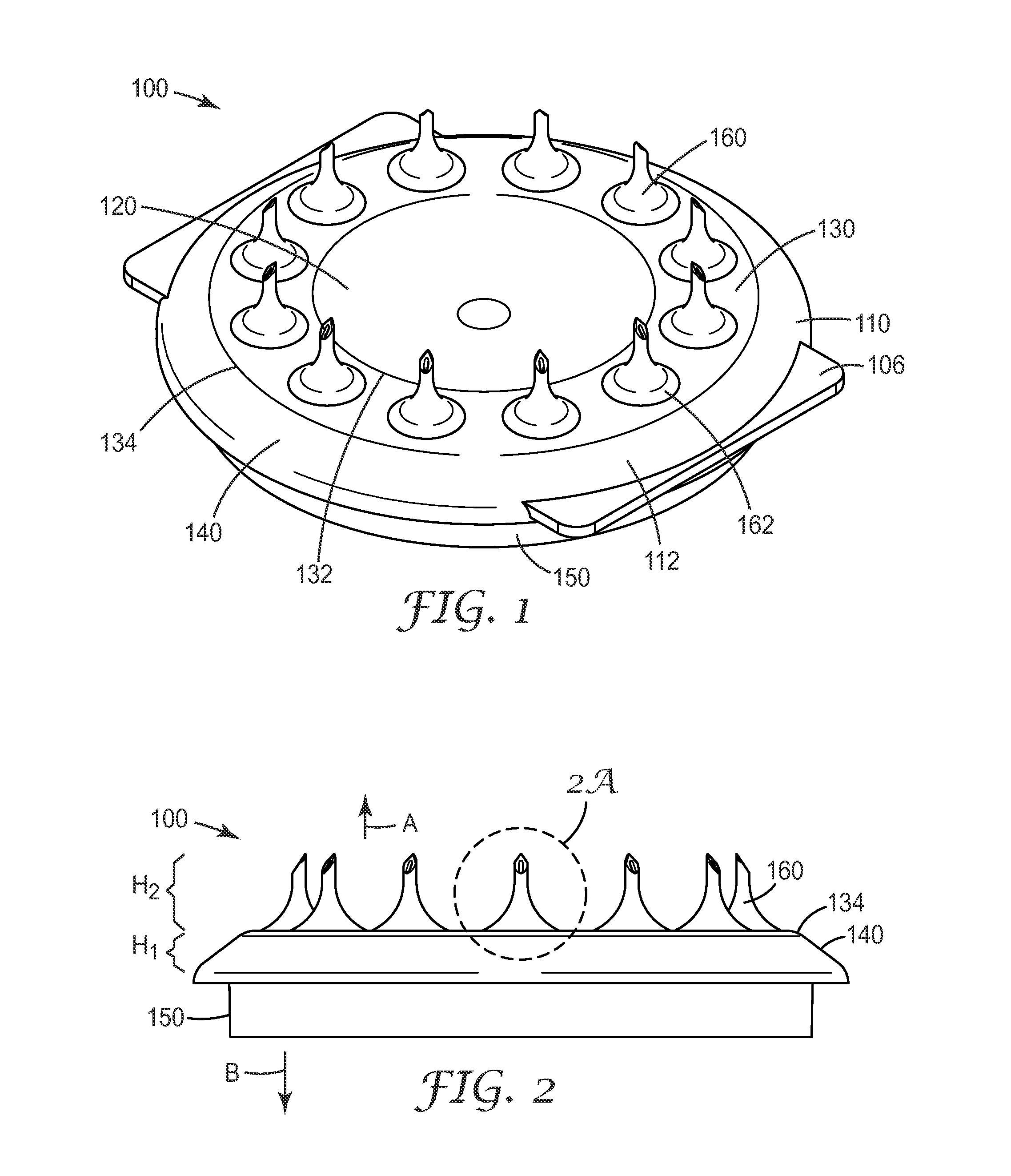Article comprising a microneedle
- Summary
- Abstract
- Description
- Claims
- Application Information
AI Technical Summary
Benefits of technology
Problems solved by technology
Method used
Image
Examples
example 1
Fabrication of Microneedle Articles
[0165]The microneedle articles were prepared from polymeric material using standard injection molding procedures. The molded microneedle articles were prepared using a mold assembly prepared from three mold sections with each section machined from steel. The first mold section contained projections that defined the beveled shape of the needle tip in the molded array. Each projection in the first mold section had a further cylindrical extension that defined features of the tip segment of the microneedles tip, including the opening on a bevel proximate the tip of the microneedle and a portion of the hollow channel extending through the body of each microneedle. The second mold section served as a template to define the pattern of the microneedles in the molded article, the external shape and size of the microneedles in the molded article, and the first side of the article (including the central cavity portion, platform portion, and peripheral portion...
example 2
Injection Apparatus used to Test the Microneedle Articles
[0167]Fully assembled microneedle article injection apparatuses similar to apparatuses described in U.S. Patent Application Publication No. US2012 / 0123387 (FIGS. 1-13) and U.S. Provisional Patent Application No. 61 / 740,941 (FIGS. 2, 14 and 15) were used. The drug cartridge in each apparatus contained al mL solution of 0.005% methylene blue in five percent aqueous dextrose. The injection apparatus from Example 1 of U.S. Provisional Patent Application No. 61 / 740,941 was used with the following exceptions. First, the section of the apparatus joined to the adhesive assembly was not milled to remove material. Second, the construction of the adhesive assembly was different. Instead of using the four layer adhesive of U.S. Provisional Patent Application No. 61 / 740,941, the adhesive assembly used was a laminate composed of only two layers. The first layer was a 0.10 mm thick sheet of 3M 1510 double sided tape (available from the 3M Co...
example 3
Injection Apparatus
[0169]The same microneedle injection apparatus as described in Example 2 was used with the exception that the wire diameter of the U-shaped leaf-like insertion spring (i.e. first stored energy device as described in U.S. Patent Application Publication No. US2012 / 0123387 (FIGS. 1-13) and U.S. Provisional Patent Application No. 61 / 740,941 (FIGS. 2, 14 and 15)) was 1.50 mm instead of 1.59 mm.
PUM
 Login to View More
Login to View More Abstract
Description
Claims
Application Information
 Login to View More
Login to View More - R&D
- Intellectual Property
- Life Sciences
- Materials
- Tech Scout
- Unparalleled Data Quality
- Higher Quality Content
- 60% Fewer Hallucinations
Browse by: Latest US Patents, China's latest patents, Technical Efficacy Thesaurus, Application Domain, Technology Topic, Popular Technical Reports.
© 2025 PatSnap. All rights reserved.Legal|Privacy policy|Modern Slavery Act Transparency Statement|Sitemap|About US| Contact US: help@patsnap.com



